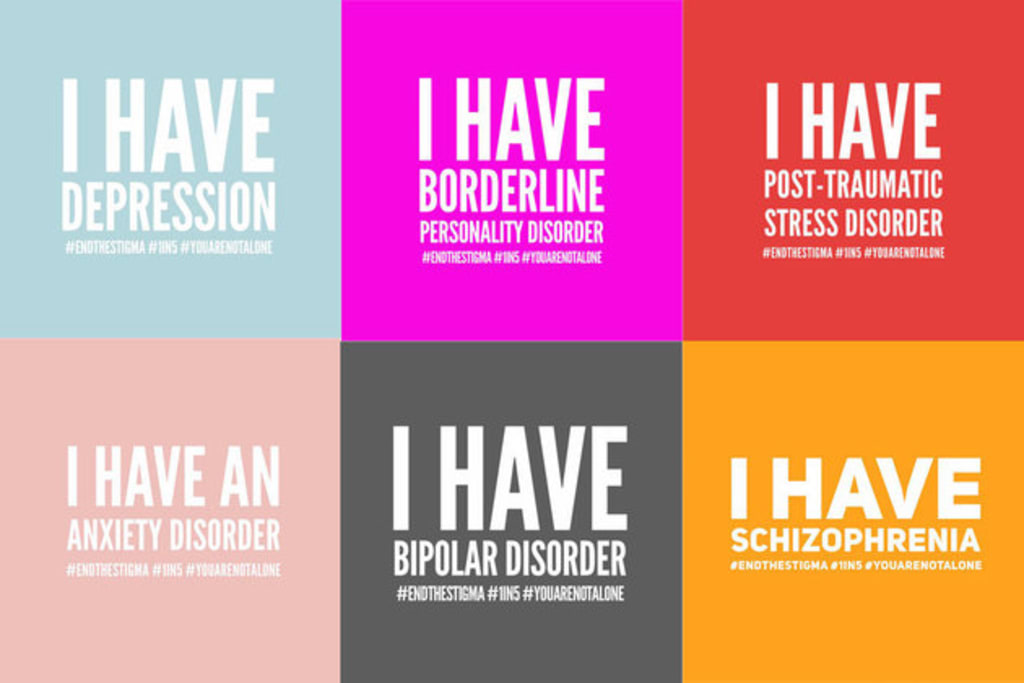Living with Borderline Personality Disorder - the Diagnosis
Dealing with my diagnosis and how BPD is seen today.

It took a lot out of me to muster up the courage to make it to my therapy appointment on time. By the time I had gotten dressed, the anxiety of leaving the house had set in. The lurking thoughts of my fear of driving —thanks to my car accident earlier in the year — caused my heart to race. It did not stop pounding on the trip across town, not even as I arrived, only intensified as I entered the behavioral health office. Step one, check, I told myself. I made it to the office. Without making eye contact with the receptionist, I checked in and flipped through our local newspaper (supplied by the office) to try to ease my anticipation. The therapist called my name, led me to her office, and closed the door behind me; not only ensuring my legally-required privacy, but sealing me inside her office to unleash my life story and traumas in what should have taken an hour… but dragged on well past two. She took a long time to think and write down my experiences.
“There is something that I would like to talk to you about,” my therapist said. “Have you ever heard of Borderline Personality Disorder?”
Borderline Personality Disorder. The words sting like acid; yes, I have heard of BPD. Out of my own fair share of mental diagnoses… this was now the worst on the list. “Borderline Personality Disorder (BPD) is a condition characterized by difficulties regulating emotion. This means that people who experience BPD feel emotions intensely and for extended periods of time, and it is harder for them to return to a stable baseline after an emotionally triggering event.” (NAMI). BPD is difficult to diagnose, as it can coexist with other mental illnesses, such as anxiety disorder, depression, post-traumatic stress disorder (PTSD), eating disorders, attachment & abandonment disorders… all of which I have already been suffering from for years. She assumed it had been underlying and unnoticed for years. The rest of our session wrapped up after almost 2 ½ hours of assessment. She gave me some brief information on my new diagnosis and set up my next appointment, sending me home with a sinking heart and — for once — a quiet mind.
When I crawled out of my mental cavern of depression later that evening, I started to do some more research on the illness that had successfully lurked in the shadows of my mind, raging uninhibited at my lowest points, for years. It only took a few minutes of research before the pieces started to fall in place… pieces about myself I hadn’t been sure I would ever discover.
Borderline Personality Disorder is not well understood, as the symptoms and traits experienced by those with BPD also are consistent with other mental illnesses like PTSD, anxiety disorder, and depression; the term “Borderline” in this case meaning ‘not fitting within the borders of one or more definite illness.' “It’s estimated that 1.6% of the adult U.S. population has BPD, but that number may be as high as 5.9%. Nearly 75% of people diagnosed with BPD are women. Recent research suggests that men may be equally affected by BPD, but are commonly misdiagnosed with PTSD or depression.” (NAMI). Those who suffer from BPD experience symptoms like feeling worthless, intense insecurities, thoughts of suicide, a range of behavioral issues such as antisocial behavior, emotional instability, compulsive behavior; risky behaviors such as unsafe sex, financial instability, and self-destructive behavior. Those who suffer from BPD have “trouble maintaining stable relationships, often experience intense episodes of anger, depression, and anxiety that can last from a few hours to days at a time.” (NIMH).
It’s hard to see Borderline Personality Disorder in a positive light, especially when you have to experience it first-hand. I couldn’t help but think back on all of the traumas I had experienced in life, and how those events had affected me as a person. Most of my trauma was experienced in childhood, e.g. parental abandonment, foster care mental, verbal, physical, sexual abuse, substance abuse, etc. I reflected on my past relationships and how they ended — with me in guilt because my actions had led to the inevitable breakups. The friendships that had ceased because I wasn’t able to maintain the upkeep. All of the flashbacks and regressions I would experience, or the triggers and episodes that were starting to become more and more frequent. The anger…the sadness…the panic attacks…and worst of all — the abandonment. All of those separate incidents that had increasingly plagued me in the last 5 years had some mysterious connection that I was incapable of recognizing — until my egregious diagnosis tied them all together perfectly in a pitiful, lifeless bow of realization.
Borderline Personality Disorder is frightening, especially now that I know whatever has been destroying me mentally one day at a time for years has an actual title, has a name. It has changed who I am, how I see the world, and how I am able to communicate with others. I see anger in a neutral face. I hear disapproval in all forms of conversation. Any text can easily be misconstrued as negativity. The battle that rages in my mind is all-consuming. When BPD rears its ugly head, I scream and yell. The anxiety I feel is indescribable; my heart races and my entire body shakes. The walls are up, my mind hardened and cruel. There are no feelings of remorse as I spit out hurtful words or relapse into harmful behavior. The real me is trapped away, crying and screaming for something to unleash her — so she can slaughter the monster that desecrates the relationships she’s worked so hard for; the disorder that cripples her at the thought of leaving the house and stops her from being able to work. She’d give anything just to feel for one moment that she owns her skin, her mind, her soul once again.
When the episode is over, I am exhausted and mentally unable to process much else for the rest of the day. I am left wondering, “Where did that come from? Why did I react like that? I’m such a bad person — I can’t believe I said those things/acted like that.” It has worked its way into an endless cycle of repression and expression. The symptoms are repressed until it is too late for me to handle them rationally, then forcibly expressed in negative ways. Sometimes those symptoms arise quickly with little notice and react instantly. It is truly a feeling of being held prisoner in your own mind, since I feel like I am constantly monitoring my own actions and behaviors to see what is going to trigger another episode.
There are treatments for Borderline Personality Disorder that include different forms of therapy and medication. BPD tends to be a chronic illness that can last from months on end to being a lifelong battle. Psychotherapy treatments, such as dialectical behavioral therapy (DBT) and cognitive behavioral therapy (CBT), can help those with Borderline Personality Disorder cope with their emotional dysregulation over a long-term period of time, working to change the negative thoughts and behaviors experienced with the disorder. In the long run, I sense there is hope with coping with this disorder, though that hope is still small and frail.
The social stigma surrounding mental illness and open communication regarding the subject makes it difficult for those who suffer to feel comfortable acknowledging their issues around others. When the only place you can feel welcome and safe within your disorder is the therapy office, trying to replicate that feeling with others can feel uneasy or unwelcome to the individual trying to embrace the problems that they have. Since BPD is relatively new, not many people know about the disorder, nor are they willing to look past the initial force of the title of the diagnosis — ‘Borderline Personality Disorder’ sounds just as scary as it actually is, though the title is misleading in regards of defining the actual disorder.
While working with a therapist and the possibility of medication can greatly help those who are suffering from BPD, I believe the illness needs to be brought to a greater light. The disorder has gone unnoticed and untreated in many Americans, and an alarming rate of those individuals may be misdiagnosed with other mental illnesses. Individuals suffering from Borderline Personality Disorder need a constant line of support in case of episodes or outbursts, such as people who have been informed of the illness and understand the symptoms. Friends and family that are educated on BPD are more likely to understand and help those suffering from the disorder, which, with the help of psychotherapy — and if needed, medication — could bring more positive experiences and outcomes in the long run to those with Borderline Personality Disorder.
Works Cited
Clinic, Mayo. "Borderline Personality Disorder." 11 September 2017. https://www.gstatic.com/healthricherkp/pdf/borderline_personality_disorder.pdf. Document. 3 December 2017.
NAMI. National Alliance on Mental Illness. December 2017. Website. 4 December 2017.
NIMH. "National Institiute of Mental Health." 2017. https://www.nimh.nih.gov/health/topics/borderline-personality-disorder/index.shtml. Website. 3 December 2017.
About the Creator
Jess Didway
Mother, activist, athlete, creator in the PNW.






Comments
There are no comments for this story
Be the first to respond and start the conversation.